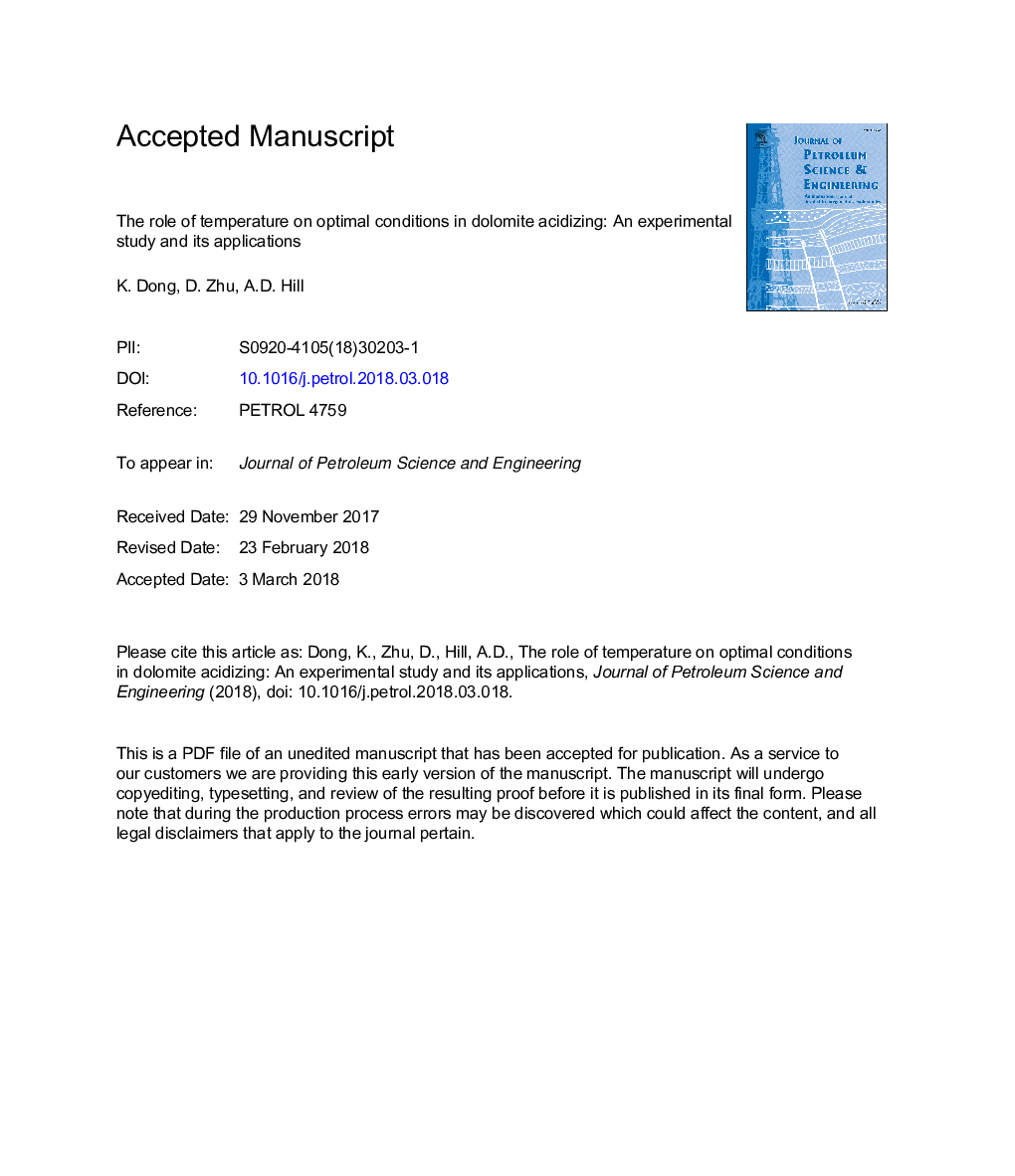| Article ID | Journal | Published Year | Pages | File Type |
|---|---|---|---|---|
| 8125124 | Journal of Petroleum Science and Engineering | 2018 | 23 Pages |
Abstract
Experimental results show that the optimal acid interstitial velocity increases with increasing temperature. However, the rate of increase between 122â¯Â°F and 185â¯Â°F is significantly larger than the rate of increase between 185â¯Â°F and 260â¯Â°F. It is due to the difference of increase for acid diffusion rate and surface reaction rate, which is discussed in this paper. Interestingly, unlike limestone, the corresponding optimal breakthrough pore volume decreases with increasing temperature from 122â¯Â°F to 185â¯Â°F, and increases slightly from 185â¯Â°F to 260â¯Â°F. This indicates that more volume of acid is needed for reservoirs of lower temperature. Based on the experimental results and an upscaling method, an application scheme is presented for dolomite reservoirs with varying temperatures, which can be used for engineering references.
Related Topics
Physical Sciences and Engineering
Earth and Planetary Sciences
Economic Geology
Authors
Kai Dong, Ding Zhu, A. Daniel Hill,
